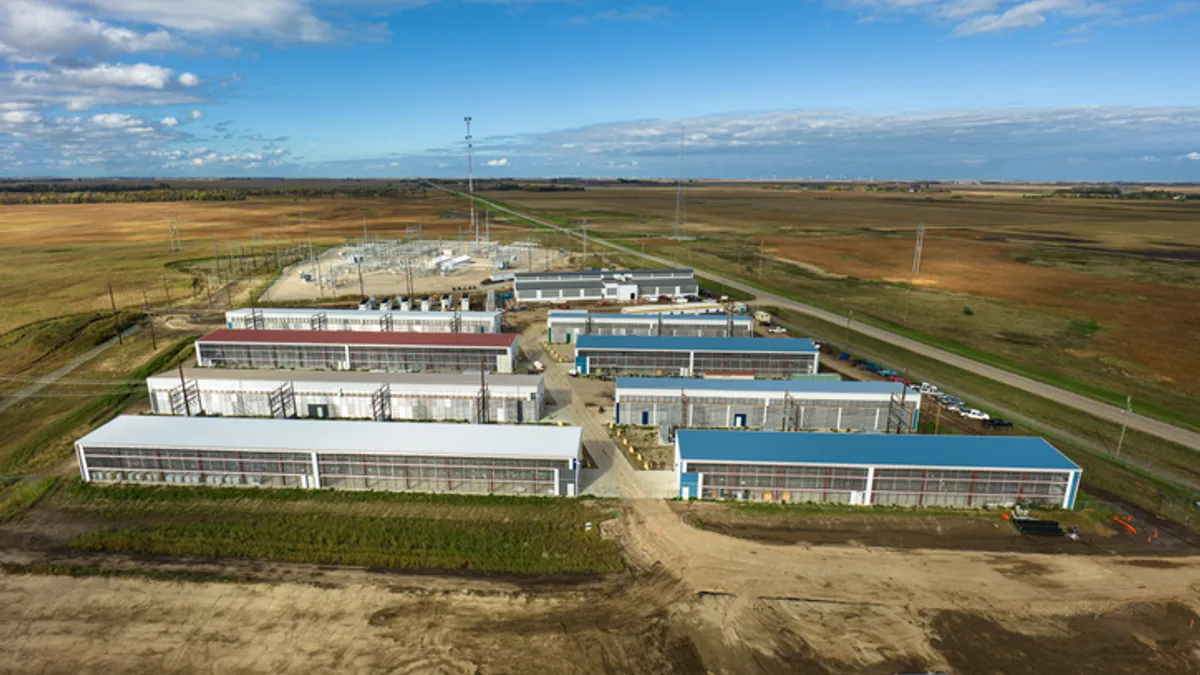Bob Hinkle is CEO of Metrus Energy
COP27 is now in the rearview mirror, but a description of energy efficiency by a fellow evangelizer is stuck in my brain: Energy efficiency is “the lottery ticket we all have, but need to hand in.” So, why aren’t we cashing this in? COP27 was billed as the “Implementation COP”, however energy efficiency, which is the quickest, cheapest resource to implement climate action, was not center stage.
The lack of focus on energy efficiency as a solution is not new but is becoming increasingly problematic. We are massively behind on the 2030 GHG reduction targets needed to keep global warming below the 2 degrees Celsius tipping point. For countries and businesses alike, there is more momentum on commitment-making than actual GHG-reducing project implementation.
According to the United Nations Environment Program, updated GHG reduction targets announced by countries this year would shave less than 1% off projected 2030 emissions, far below the 45% committed to at COP26. At the corporate level, a study by Accenture shows that about one-third of the world’s top 2,000 companies have made net zero commitments, but over 90% of these companies are off track and expected to miss their targets. We simply need to be doing more, and faster.
This is where energy efficiency comes into play, as it is our sharpest, most at-the-ready weapon in the fight against climate change. In the U.S., energy efficiency alone can save more than 50% of the GHG emissions needed to reach our national climate goals. Globally, energy efficiency can help the world reduce over 40% of the emissions needed to hit the targets of the Paris Agreement.
In terms of speed to market, unlike other supply side energy resources, energy efficiency is ready to deploy now. There are no complications with permitting or need to first build transmission lines. Energy efficiency should be the global answer to "where do we start?" It is also the cheapest energy resource on the planet: According to Lawrence Berkeley National Labs, energy efficiency is one-third the cost of solar PV + storage.
The conundrum of energy efficiency is that even though it is billed as the first response or first fuel, it does not capture our collective attention — until there is a crisis. Look no further than Vladimir Putin's war to see how quickly systems can shift when energy security is threatened, and natural gas prices soar. For example, heat pump installations throughout Europe have skyrocketed with Reuters even describing them as the "must have holiday gadget." But every day, in every sector of every country, energy is wasted even though there are thousands of existing technologies and equipment upgrades (beyond the alluring heat pump) that can be deployed to save significant energy and reduce GHG emissions.
So, what can we do to change this? I see the following three areas to focus on.
Give energy efficiency equal airtime with other climate-positive solutions.
The diverse and diffuse nature of energy efficiency projects, which often involve hundreds of different pieces of smaller equipment spread throughout numerous buildings, makes for a challenging narrative compared to the almost instantly understood (and admittedly very cool) visual of solar panels. While I view energy efficiency as an elegant solution with almost limitless possibilities, it often takes crisis response thinking to drive widespread public and private sector action on saving energy.
Whether the concern is energy security, GHG emissions reductions, equipment resiliency, healthy buildings or improved operations, energy efficiency projects are worthy climate action items. In our dangerously warming world, energy efficiency should be the front runner in the race to net zero. This is the core message of the recently launched Mission Efficiency group which is a global coalition of governments and organizations dedicated to accelerating the transition toward energy-efficient economies worldwide.
Deploy, deploy, deploy
Secretary of Energy Jennifer Granholm is fond of saying, “deploy, deploy, deploy,” but we need a U.S. (and global) shift to prioritize the deployment of efficiency equipment and technology first. This is consistent with Ceres' 2030 roadmap which says companies should reduce onsite emissions first before they look to mitigate their emissions offsite. This approach also creates a synergistic relationship with supply-side renewable energy solutions which can benefit from co-development with energy efficiency.
This is where financing solutions like Energy as a Service, or EaaS, come into play. The solution for decarbonization is accessible to all; it doesn’t have to come at a cost. EaaS can unlock the savings potential in the built environment and leverage it to upgrade to an energy-efficient infrastructure. EaaS can fund energy retrofits via energy savings with zero upfront, off-balance-sheet financing solutions, and still deliver savings to the bottom line. With EaaS providers handling the retrofit from soup to nuts, it’s tough to argue that doing nothing is easier than implementing an energy-efficient solution.
Drive legislation that incentivizes energy efficiency
The importance of energy efficiency retrofits often gets overlooked in federal legislation, particularly for large commercial and industrial buildings which, according to the U.S. Energy Information Administration, account for over 50% of total energy use in the U.S. For example, the $369 billion included in the Inflation Reduction Act to combat climate change did not have any added funds earmarked for retrofits to C&I buildings outside of expanding the applicability of the already existing 179D tax deduction.
This is a missed opportunity to have major legislation drive near-term actions that existing building owners can take to lower GHG emissions. An interesting trend that was clear at COP27 was increasing activity to deploy energy efficiency at the subnational level. A number of mayors and state-level actors were in attendance talking about local initiatives, including Washington Gov. Jay Inslee, D, who discussed his state's decarbonization plans that include the use of Building Performance Standards to achieve energy savings.
Cities are also increasingly requiring buildings to improve their energy efficiency and transition away from fossil fuels. Law 97 in New York City requires buildings larger than 25,000 square feet (which accounts for roughly half of the built square footage in the city) to reduce their emissions to 40% below 2005 levels by 2030 and 80% by 2050. Just like littering and polluting, we need more markets to follow in the footsteps of New York’s Local Law 97 and make energy waste unacceptable.
As we round the corner to 2023, keeping energy efficiency top of mind is imperative to meeting our near- and long-term climate goals. We need to collectively embrace "Mission Efficiency" and dedicate the resources needed to scale and accelerate the implementation of the wide range of energy efficiency projects that can get started now. The built environment is replete with opportunities to reduce energy waste and GHG emissions. Let's be done with climate commitments that are not clearly linked to 2023 action plans: It is time to finally cash in this winning lottery ticket.






















